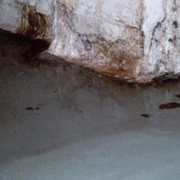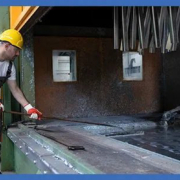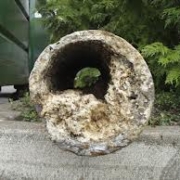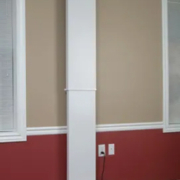The Difference Between Interior and Exterior Basement Waterproofing Atlanta
Basement Waterproofing Atlanta: Two Types
There are two theories in the world of basement waterproofing Atlanta: fixing the problem from the inside or from the outside. The main difference between interior and exterior waterproofing is in the main concept. Exterior waterproofing blocks the water from coming inside. Interior waterproofing allows water in to divert it and manage it out.
Exterior Basement Waterproofing Atlanta
Exterior waterproofing is more like true waterproofing. Like when you waterproof hiking boots. Essentially a waterproof membrane or sheet is installed around the exterior foundation walls. In a retrofit job on an existing house, a contractor will excavate around the foundation exposing the foundation walls. They install the system usually involving some sort of wall treatment and a French drain to catch the water along the bottom of the foundation. This channel then directs the water away from the foundation and out into the yard. This technique keeps the water from ever entering the basement at all.
The problem is sometimes there isn’t space to excavate, no access, or the homeowner doesn’t want to excavate the yard for whatever reason. Contractors who do this approach will replant grass and replace bushes, but it doesn’t take time for the landscaping to recover from an exterior waterproofing installation. And this approach can be expensive and a bit more labor intensive equating to more labor costs.
Interior Basement Waterproofing Atlanta
Interior waterproofing isn’t really waterproofing per se but more of water management and diversion. The concept is that just by the nature of a below-grade structure, water and moisture will come into the basement, and for the basement to stay dry it needs a way out. An interior waterproofing system will allow water to enter the basement in a controlled way and divert it back outside through sump pumps, discharge lines, drainage systems, walls board systems and perimeter channels.
A contractor will start inside the basement and cut a channel around the perimeter of the basement floor, install an interior French drain with a perforated pipe buried in gravel or washed rock and recovered. A sump pump is commonly part of an interior waterproofing system to pull excess water from below the concrete floor and expel it out the discharge line and drained outside. There are many different variations of the interior waterproofing system. They all work to manage water and moisture even though they are all different.
Some waterproofing companies will do exterior or interior waterproofing or a combination of both methods. When it comes to basement waterproofing, one system doesn’t fit all. It is important that a contractor do a thorough inspection to determine which method is right for your house and your property.
While exterior waterproofing could be right in one situation, it may not even be possible in another and vice versa.







